The University District blog is a resource for Calgarians who want to live, work, play, visit or buy in the northwest. We will provide you with information, stories, news and a closer look at the things that matter so you can live a more inspired, active and connected life in NW Calgary at University District… Life works here.

Green Thumbs Up for Urban Gardening in Calgary
Container Yourself with a Fresh Edible Garden
Pick a pot. Pick a plant. And pick the right spot. Before you know it, perky lettuce, delicate herbs and edible blossoms are all yours to enjoy when container gardening from home.
The juicy richness of an organic heirloom tomato warmed from the sun, enjoyed minutes from being gently tugged from its vine only tastes better when grown by your own two hands!
The rewards of growing your own garden – whether on your patio, windowsill or in your yard – means that you connect with nature and can enjoy healthy and flavourful efforts from flexing your green thumb.
Sometimes a little know-how goes a long way, so we turned to Calgary gardening expert and co-author of No Guff Vegetable Gardening, Donna Balzer for some insights to create an edible garden of our own at home.

Where to Start? Grow What You Love!
If you are a gardening newcomer, start with a small natural container to get the first taste of that ‘garden-to-table’ experience. Pick your favourite culinary flavours and map out a plan for a small garden, even if your ambition is limited to a patio, balcony or entryway container.
Container gardens are especially perfect for nutrient-rich herbs and root plants that you can plant now for fall harvesting. Did you know you can plant Bull’s Blood red leaf baby beet (Donna’s favourite) or bright, orange, chubby baby carrots now for Fall? Adorable options that are fast growing and delicious!
Another Calgary grow-your-own-food favourite of Donna’s is the brightly coloured nasturtium plant. They grow fast and can be started from seed, typically germinating in as little as a week. All parts of the plant are edible from the flowers to the leaves.
Last on the list: dahlias. “These beautiful plants were once farmed as a root crop and now are enjoyed for the beauty of their blooms. Try nasturtiums or dahlias for the best of both worlds in one plant and use the flowers to season your dishes.”
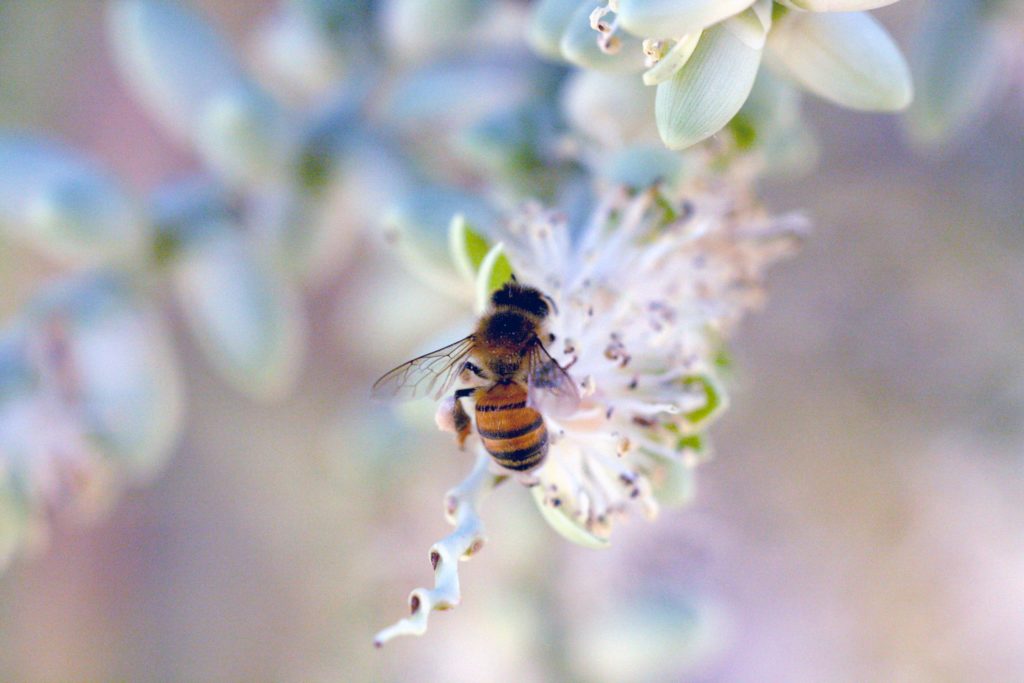
Donna says, “in small gardens, you can grow the most nutritious plants. Adding fresh, beautiful herbs to your quinoa salad pumps up the flavour and are packed with vitamins. It’s a great way to get healthy while pleasing your taste buds.”
Think parsley, cilantro, basil, mint and chives!
TIP: Visit a local nursery for root vegetable seeds or starter plants or pop into a greengrocer for small pots of herbs you can transplant at home. A 14” pot is suitable for as many as 3 nasturtium plants, for instance.
Once you grow your greens or edible flowers, use them as inspiration for a still-life drawing or painting masterpiece! Read more about discovering your inner artist on our blog.
“Now that the YYC weather is settling, there is still time to plant if you focus on herbs,” says Donna. “And if the nutritional value of small greens is not enough to excite you, how about the fact that container gardening can also enhance your decor and your feeling of togetherness?”
Looking for a fun activity for kids or couples? Donna describes the joy of potato racing!
Race Potatoes!
Pick up some older organic potatoes from your favourite nursery or grocery store (we have a soft spot for Save-On-Foods) and find the potatoes that have grown eyes. Plant your potatoes in a container with your name on it and you are off to the races. See who can grow the tallest plant or the one with the most blossoms. The winning potato? The one that is bountiful with more potatoes!
“There is a simple and undeniable joy that comes with pulling potatoes,” says Donna. “And if you are in no rush to eat them, keep watering your crop and more will grow.”
Looking for more tips on togetherness and non-tech ways to foster fun with family and friends? Check out our blog post about surprising, fun ways to bond and deepen connections with loved ones as well as others in the community here!
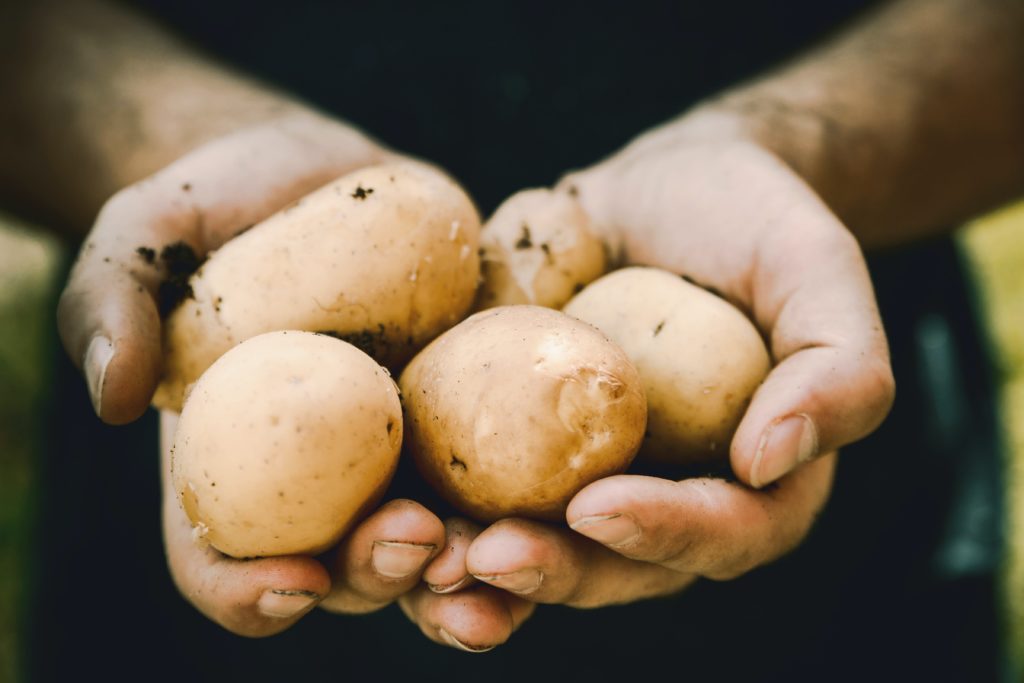
How Does Your Garden Grow?
Whatever you opt to plant and grow, here are some simple guidelines so you can harvest at home!
1. Keep it natural
Choose a natural container at least 6” deep with drainage holes. Classic terracotta pots are a great way to begin your project.
2. Select a good soil
Pick up some organic soil, seeds or starter plants.
3. Plant
Ready-started plants to nurture like chives. Perfect for kitchens during salad and baked potato season. Another good choice is lettuce. Small containers work well for lettuce because their root systems are small. Plant the seeds in early spring for summer harvests or in late summer to enjoy in fall. Our next favourite — for tea, salads, sauces and garnish — is mint. It grows like a weed and smells delightfully fresh. Other options to consider? Cucumbers, peppers, tomatoes, garlic and more inside or out! If you are behind on your planting, garlic is best planted in August or early Fall.
4. Grow
Gauge how much water and light your plant needs from its growth and how perky its leaves are. Move your plants or adjust your schedule to suit its whims!
5. Harvest
And enjoy! Freshly grown herbs and veggies taste best eaten as soon as they are harvested.
Looking for still more gardening tips? Visit Donna’s website to tune into her podcast to learn from other YYC garden lovers or visit Donna Balzer’s website for more YYC gardening tips every month.
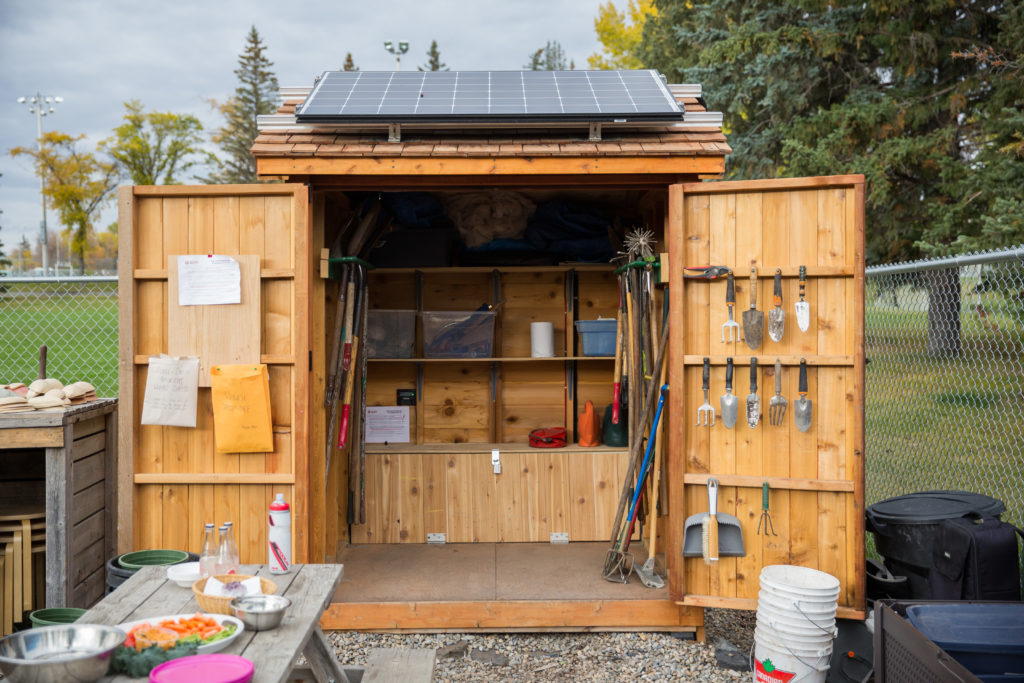
Community Gardens: Growing Together
Gardening doesn’t have to be a solitary activity in the comforts of your own home, or balcony.
Community gardens are more popular than ever and can inspire and enhance another level of neighbourly connections and healthy living that we support at University District.
Our closest neighbour, The University of Calgary campus, has its own Campus Community Garden that is a celebrated space for personal and communal growing.
We had an opportunity to chat with Amanda Mosca, Engagement Coordinator at the University of Calgary’s Office of Sustainability to learn more about how the community garden came to fruition and how the U/D community can be a part of it.
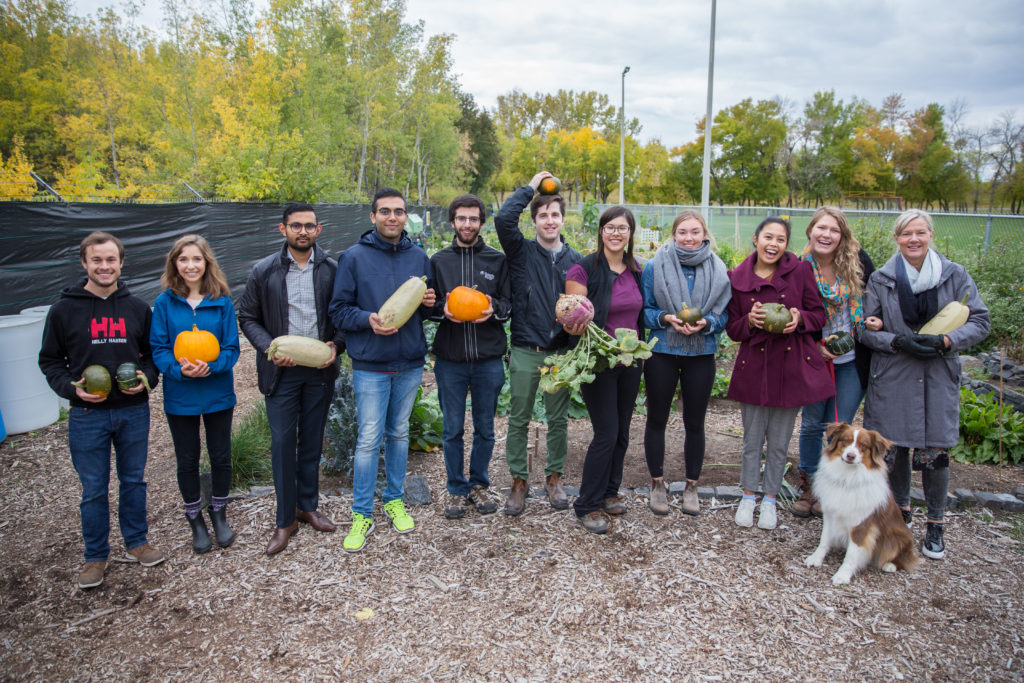
How did the Campus Community Garden start?
“It was created in 2001 by a group of students who attended a youth sustainability conference, where a key take-away was for youths to put their ideas into action.” says Amanda.
“Creating the community garden was an idea that sought to address some of the environmental issues and solutions discussed at the conference. The students wrote a proposal for an organic community garden and submitted it to the President’s Challenge contest, which was approved!”
The Community Garden has 61 plots available for rent each season for $20 and plot holders are welcome to grow whatever they like, as long as there are no synthetic pesticides or fertilizers used.
“Most people grow fruits and veggies and flowers. There are also communal spaces managed by the student Garden Club, where they grow berries, herbs, fruits and vegetables. We also have two raised beds specifically planted with a wildflower garden to support native pollinators in alignment with our Bee Campus initiative!” says Amanda.
Due to the COVID-19, garden operations in 2020 are suspended so accepting new members is not possible at this time. “We hope to reopen next spring.”
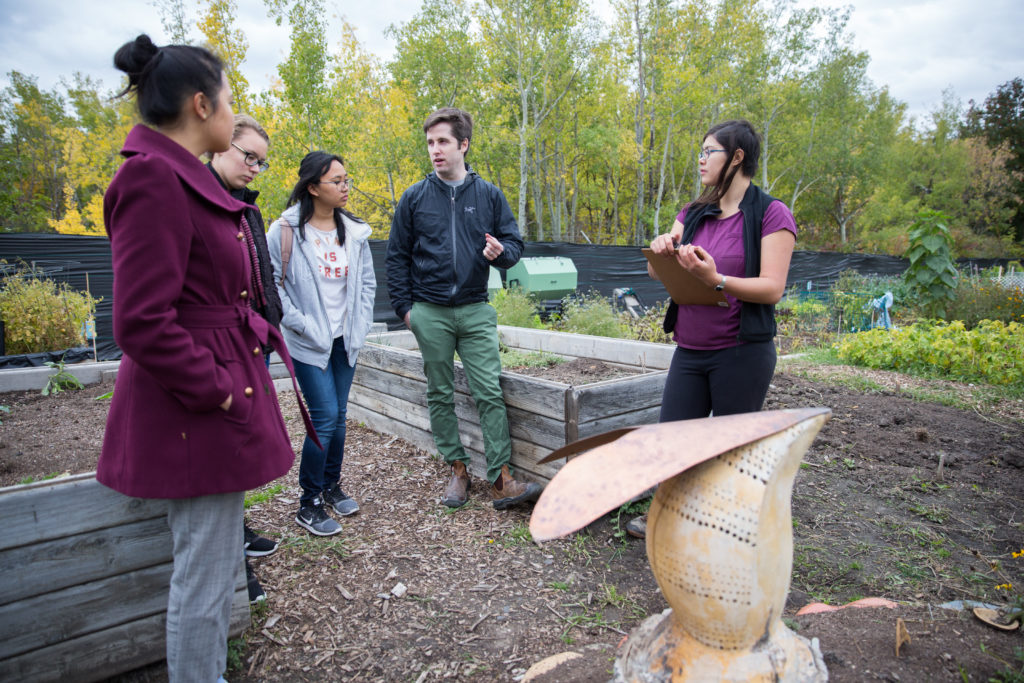
Have you seen the University of Calgary Campus Community Garden’s ceramic bee pods created by artist Dylan McLernon? Learn more about this exciting artistic and environmental project here!
How does the community garden work?
The Campus Community Garden is owned and managed by the University of Calgary, so preference for plot applications is given to students, faculty and staff, though many community members apply and join the garden too.
“Plot holders tend and harvest from rented plots (either individually or as a group sharing a plot) and the communal spaces are maintained and harvested by the student Garden Club. Extra food is often donated to the Student’s Union food bank, and in the fall the club hosts a garden clean up and harvest event where plot holders and club members can share in the harvest.”
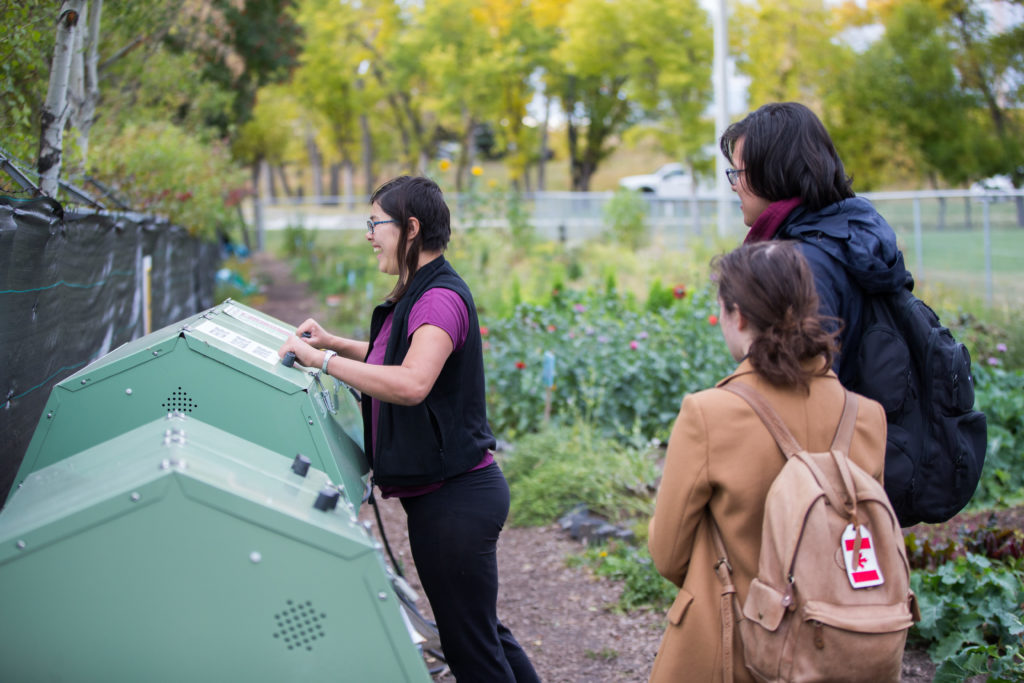
Students involved with the Garden Club at the University can volunteer their time to help maintain the garden and provide social opportunities. These activities include:
- Garden clean up and maintenance in the spring
- Planting and maintaining the communal areas and shared tools
- Hosting weekly drop-in events where gardeners can ask questions, share tips and socialize
- Plan and host other events throughout the season such as an open house, pollinator celebration during Pollinator Week, and fall harvest event
- Lead tours for various groups on campus
- Lead and support initiatives such as our Bee Campus initiative
- Create and share communications with the gardening community
If you can’t wait for the Campus Community Garden to start up, tour some of the most beautiful NW gardens for some inspiration this summer! From Varsity to Bowness and Hillhurst/Sunnyside, there are some great garden spaces to enjoy with fellow gardeners or even friends and family. They might even inspire you to look at starting one in your own community.
Looking to join a gardening group or wonder what the benefits of networking might be? Visit the Calgary Horticultural Society to learn more, and submit pictures of your patio pots or edible gardens to share! We would love to learn about and see the rewards of your kitchen or edible garden. Share with us on Facebook, Instagram and Twitter!

Join the Discussion